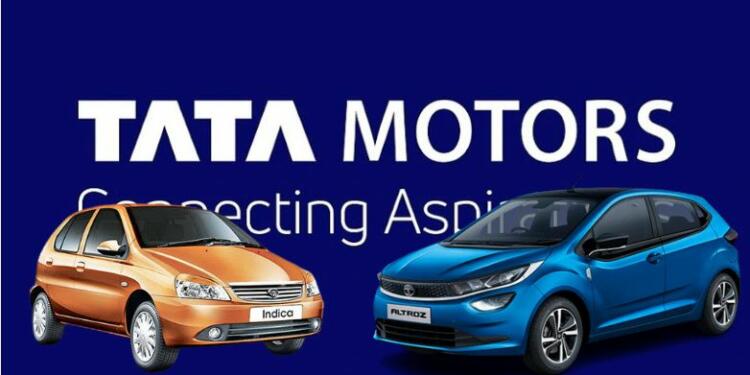Tata Motors overtook Hyundai to become the second-largest seller of passenger vehicles (PV) in the Indian car market in December 2021.
Maruti Suzuki remains the top carmaker in the country, with a sale of 123,016 units whereas Tata Motors managed to sell 35,299 units. Now, this is a grand comeback for Tata Motors in the passenger vehicles (PV) segment and it is being driven by its IMPACT design language.
Tata Motors’ rise in the passenger vehicles (PV) segment in the 1990s
Tata Motors has been a trusted name in the Indian automobile industry for several decades now.
It is the undisputed leader in the heavy vehicles sector. From roadways bases to commercial tempos or trucks, and military trucks, Tata Motors make some tough and endurable heavy vehicles.
But it also started making a mark in the Indian PV market in the late 1990s. It started with the launch of Safari in 1998. The car became popular instantly and was described as “India’s first true SUV”.
Then, Tata Motors innovated even further. It launched Indica in the diesel version. It was one of the first small cars to be launched with a diesel variant. And for many years, it remained popular as a commercial taxi option.
Then, Tata Motors launched the Indigo which was the first sedan to be launched in an affordable sub-four metre segment. The same strategy was followed later by Suzuki, Honda and Hyundai in the form of Dzire, Amaze and Xcent respectively.
From the year 2000 to 2010, Tata Motors was looking all set to make it big in the PV segment.
The slowdown
But by the early 2010s, Tata Motors seemed lost for ideas in the PV segment. New models weren’t coming up and the remodelled versions of Indica and Indigo weren’t inspiring a lot of confidence.
On the other hand, Hyundai and Suzuki were making rapid strides in the cars market. And for the time being, it seemed as if Tata Motors would remain a brand synonymous with heavy automobiles. But this was set to change with the IMPACT design language.
IMPACT design language drives Tata Motors’ grand comeback
In 2016, Tata Motors introduced its IMPACT design language. The first offering of this brand new concept was the Tiago.
The design brand stood for ‘Immediate IMPACT at first sight. Lasting IMPACT over time’. And it immediately brought Tata Motors back into the spotlight in the PV segment.
Tiago was, of course, a successful launch. And soon, Tata Motors launched several new models based on the same design language, namely Hexa, Tigor and Nexon.
Designs for the future
In the early 2010s, Tata Motors wasn’t able to impress consumers with its designs. And designs were the only problem because, in terms of safety, strength and performance, Tata Motors has always enjoyed a good reputation.
The IMPACT design language has helped Tata Motors score high on the design front too.
In 2018, Tata Motors decided to further expand its IMPACT design language. It launched IMPACT Design 2.0 with more contemporary features. The design ethos focused on ‘Ex’s and the 3 ’In’s, which translates into expressive exterior surfaces and welcoming interior spaces. And the result was a magnificent product called Tata Harrier.
And Tata Motors made another big move during the COVID-19 Pandemic lockdown. It conceived IMPACT Design 3.0, which is set to produce a whole new range of some exciting products.
Tata Motors’ new global design head Martin Uhlarik interacted with HT Auto and said that Impact 3.0 design language will carry more digital surfaces in future offerings. Uhlarik added, “The Impact 3.0 will communicate how the car has been designed, who it has been designed for.”
Tata Sierra, for example, is all set to make a comeback with the new design language. And it will be very different from the original pickup-based two-door SUV that was launched in 1991.
The IMPACT design language is thus helping Tata Motors strengthen its hold on the Indian cars market and stage a spectacular comeback.





























